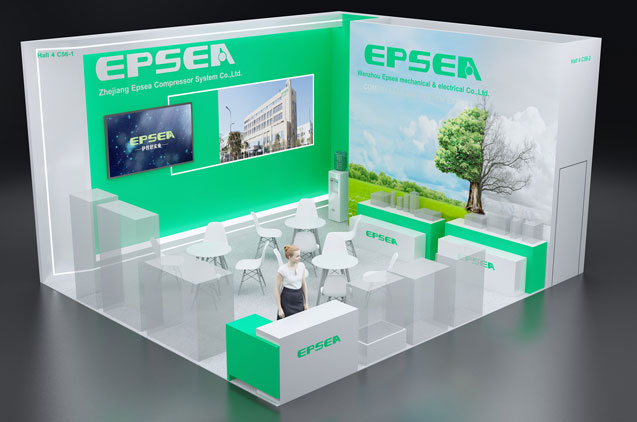Product category
Contact Us
Deep understanding is beneficial for providing you with better quality services
Phone:+86 180 2026 5151
Email:lily@heama-expo.com
Address:Zhongxin Building, No. 15 Yueliangwan Road, Industrial Park, Suzhou City, Jiangsu Province, China
2023-09-01 18:15:31
What are the common processes of Suzhou exhibition design?
Suzhou Exhibition design is a complex and challenging task, which involves multiple links and details, and requires the full cooperation of the planning, design and execution teams. In the whole process of exhibition design, there are a series of commonly used processes, which will be detailed below to help you better understand the whole process of Suzhou exhibition design.
Step 1: Identify your goals and needs

The primary task of Suzhou exhibition design is to clarify the objectives and needs of the exhibition. Before the show, you need to determine who your target audience is, what message you want to convey through the show, and what effect you want to achieve. These goals and requirements will guide the entire design process.
Step 2: Develop an exhibition strategy
Exhibition strategy is the basis of exhibition design, which includes the plan of booth selection, exhibition mode, exhibition item setting and so on. In this step, you need to consider the exhibition venue, exhibition size, product display requirements and other factors to develop an overall strategy suitable for the exhibition.
Step 3: Booth planning and design
Booth planning and design is an important part of exhibition design. In this step, you need to determine the size, form, layout of the booth, as well as display methods, lighting effects, etc. Booth planning should take into account the display and display of exhibits, as well as the flow of visitors, so that the entire booth appears attractive and reasonable layout.
Step 4: Exhibition design and production
Exhibition design and production is the core of Suzhou exhibition design. In this step, you need to design exhibition display rack, display board, display screen and other display tools, but also need to produce display content text, pictures, videos, etc. The design and production of exhibition items should be matched with the planning and strategy of the booth to achieve the best display effect.
Step 5: Logistics transportation and construction
Logistics transportation and construction is the implementation of Suzhou exhibition design. Before the exhibition, you need to determine the logistics and construction arrangements for the exhibits, to ensure that the exhibits can arrive at the exhibition site in time, and to build in accordance with the design requirements. The quality and efficiency of logistics transportation and construction directly affect the effect of the exhibition.
Step 6: Exhibition execution and management
Exhibition execution and management is the last step of exhibition design. During the exhibition, you need to organize the exhibition team to complete the exhibition construction, goods display, information transmission and other work, and on-site management and coordination. Exhibition execution and management requires a high degree of organizational and collaborative ability to ensure that the entire exhibition can run smoothly.
The above is the common process of Suzhou exhibition design. Exhibition design is a complex and critical task that requires you to have a clear understanding of goals and needs and to work closely with the design and execution teams. Through a scientific and orderly process, you will be able to create impressive exhibition results.
Step 1: Identify your goals and needs

The primary task of Suzhou exhibition design is to clarify the objectives and needs of the exhibition. Before the show, you need to determine who your target audience is, what message you want to convey through the show, and what effect you want to achieve. These goals and requirements will guide the entire design process.
Step 2: Develop an exhibition strategy
Exhibition strategy is the basis of exhibition design, which includes the plan of booth selection, exhibition mode, exhibition item setting and so on. In this step, you need to consider the exhibition venue, exhibition size, product display requirements and other factors to develop an overall strategy suitable for the exhibition.
Step 3: Booth planning and design
Booth planning and design is an important part of exhibition design. In this step, you need to determine the size, form, layout of the booth, as well as display methods, lighting effects, etc. Booth planning should take into account the display and display of exhibits, as well as the flow of visitors, so that the entire booth appears attractive and reasonable layout.
Step 4: Exhibition design and production
Exhibition design and production is the core of Suzhou exhibition design. In this step, you need to design exhibition display rack, display board, display screen and other display tools, but also need to produce display content text, pictures, videos, etc. The design and production of exhibition items should be matched with the planning and strategy of the booth to achieve the best display effect.
Step 5: Logistics transportation and construction
Logistics transportation and construction is the implementation of Suzhou exhibition design. Before the exhibition, you need to determine the logistics and construction arrangements for the exhibits, to ensure that the exhibits can arrive at the exhibition site in time, and to build in accordance with the design requirements. The quality and efficiency of logistics transportation and construction directly affect the effect of the exhibition.
Step 6: Exhibition execution and management
Exhibition execution and management is the last step of exhibition design. During the exhibition, you need to organize the exhibition team to complete the exhibition construction, goods display, information transmission and other work, and on-site management and coordination. Exhibition execution and management requires a high degree of organizational and collaborative ability to ensure that the entire exhibition can run smoothly.
The above is the common process of Suzhou exhibition design. Exhibition design is a complex and critical task that requires you to have a clear understanding of goals and needs and to work closely with the design and execution teams. Through a scientific and orderly process, you will be able to create impressive exhibition results.
